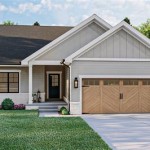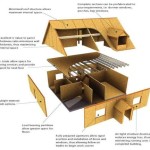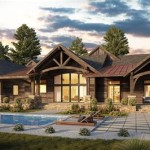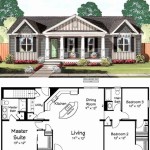Waterfront house plans are architectural blueprints specifically designed for constructing or renovating homes situated on waterfronts. These plans meticulously consider the unique challenges and opportunities presented by waterfront locations, ensuring that homes are not only aesthetically pleasing but also safe, functional, and seamlessly integrated with their surroundings.
One notable application of waterfront house plans can be seen in the iconic waterfront mansions that adorn the shores of Lake Tahoe in California and Nevada. These luxurious homes are designed to take full advantage of the stunning lake views, featuring floor-to-ceiling windows, expansive decks, and private boat docks. Waterfront house plans cater to a diverse range of styles and preferences, empowering homeowners to create dream homes that fully embrace their waterfront lifestyle.
As we delve into the main body of this article, we will explore the key considerations and design elements that characterize well-executed waterfront house plans. From selecting the appropriate materials and structural systems to maximizing natural lighting and designing outdoor living spaces, we will provide valuable insights to guide you in creating a waterfront home that is both beautiful and functional.
Waterfront house plans encompass a myriad of considerations to ensure the safety, functionality, and aesthetic appeal of homes built on waterfronts. Here are nine important points to keep in mind when designing or selecting waterfront house plans:
- Flood zone designation
- Foundation design
- Erosion control
- Dock and boat access
- Outdoor living spaces
- Natural lighting
- Energy efficiency
- Building materials
- Sustainability
By carefully addressing these key points, waterfront house plans can create homes that not only withstand the challenges of waterfront living but also provide a comfortable, enjoyable, and visually stunning living environment.
Flood zone designation
Flood zone designation is a critical factor to consider when designing or selecting waterfront house plans. Flood zones are areas that have been identified as having a high risk of flooding, and they are typically designated by the Federal Emergency Management Agency (FEMA). Building codes and regulations often require special construction methods and materials for homes located in flood zones to minimize the risk of damage from flooding.
- Base flood elevation (BFE)
The BFE is the elevation of the floodwaters during a 100-year flood, which is a flood that has a 1% chance of occurring in any given year. Homes located below the BFE must be elevated on pilings or other flood-resistant construction methods.
- Flood insurance
Flood insurance is required for homes located in flood zones. Flood insurance can help to cover the costs of repairing or rebuilding your home if it is damaged by a flood.
- Construction materials
Water-resistant and flood-resistant materials should be used in the construction of homes located in flood zones. These materials can help to minimize the risk of damage from flooding.
- Building codes
Building codes in flood zones often require special construction methods and materials to minimize the risk of damage from flooding. These codes may include requirements for elevated foundations, flood-resistant walls, and breakaway walls.
By carefully considering flood zone designation and adhering to building codes and regulations, waterfront house plans can help to ensure that homes are safe and resilient in the face of flooding.
Foundation design
The foundation of a waterfront home is critical to its safety and stability. Waterfront homes are subject to unique challenges, such as flooding, erosion, and high winds. The foundation must be designed to withstand these challenges and protect the home from damage.
- Elevated foundations
Elevated foundations are common in waterfront homes. They raise the home above the ground level, which helps to protect it from flooding and erosion. Elevated foundations can be constructed using pilings, concrete piers, or other methods.
- Flood-resistant foundations
Flood-resistant foundations are designed to withstand the effects of flooding. They are typically constructed using waterproof materials and techniques, such as flood-resistant concrete or flood shields.
- Erosion-resistant foundations
Erosion-resistant foundations are designed to protect the home from erosion caused by waves, currents, or other factors. They are typically constructed using materials that are resistant to erosion, such as riprap or concrete seawalls.
- Wind-resistant foundations
Wind-resistant foundations are designed to withstand the effects of high winds. They are typically constructed using strong materials and techniques, such as reinforced concrete or steel.
By carefully considering the foundation design, waterfront house plans can help to ensure that homes are safe and stable in the face of the unique challenges of waterfront living.
Erosion control
Erosion control is critical for waterfront homes to protect them from damage caused by waves, currents, and other factors. Erosion can undermine the foundation of a home, causing it to settle or collapse. It can also damage landscaping, driveways, and other structures around the home.
- Riprap
Riprap is a layer of large rocks or concrete blocks that is placed along the shoreline to protect it from erosion. Riprap can be used to create a seawall, which is a wall that protects the shoreline from waves and currents.
- Seawalls
Seawalls are vertical walls that are built along the shoreline to protect it from erosion. Seawalls can be made of concrete, stone, or other materials. They are typically more expensive than riprap, but they offer more protection from erosion.
- Bulkheads
Bulkheads are retaining walls that are built along the shoreline to protect it from erosion. Bulkheads are typically made of wood, steel, or concrete. They are less expensive than seawalls, but they offer less protection from erosion.
- Vegetation
Vegetation can be used to help control erosion along the shoreline. Plants with deep roots can help to hold the soil in place and prevent it from being washed away by waves and currents.
By carefully considering erosion control measures, waterfront house plans can help to protect homes from damage caused by erosion and ensure that they remain safe and stable for years to come.
Dock and boat access
Dock and boat access are important considerations for waterfront house plans. A dock provides a place to moor boats and other watercraft, and it can also be used for fishing, swimming, and other recreational activities. Boat access is important for homes that are located on navigable waterways, as it allows residents to easily access the water for boating, fishing, and other activities.
- Fixed docks
Fixed docks are permanently attached to the shoreline. They are typically made of concrete, wood, or steel. Fixed docks are the most stable type of dock, but they can be expensive to build and install.
- Floating docks
Floating docks are not permanently attached to the shoreline. They are typically made of plastic or metal, and they float on the water’s surface. Floating docks are less expensive to build and install than fixed docks, but they are not as stable.
- Boat ramps
Boat ramps are sloped surfaces that allow boats to be launched into and out of the water. Boat ramps can be made of concrete, asphalt, or gravel. Boat ramps are typically located in areas with limited access to the water, such as steep shorelines or areas with dense vegetation.
- Boat lifts
Boat lifts are mechanical devices that lift boats out of the water. Boat lifts can be used to protect boats from damage caused by waves, currents, and other factors. Boat lifts can also be used to make it easier to access boats for maintenance and repairs.
By carefully considering dock and boat access, waterfront house plans can help to ensure that homes have safe and convenient access to the water for boating, fishing, and other recreational activities.
Outdoor living spaces
Outdoor living spaces are an important part of waterfront house plans. They allow residents to enjoy the beauty of their surroundings and take advantage of the unique opportunities that waterfront living offers. Waterfront homes often have decks, patios, and other outdoor living spaces that are designed to maximize views of the water and provide comfortable and inviting places to relax and entertain.
- Decks
Decks are a popular outdoor living space for waterfront homes. They are typically made of wood or composite materials, and they can be built at various heights and sizes to accommodate different needs. Decks provide a great place to relax, entertain, and enjoy the views of the water. They can also be used for grilling, sunbathing, and other outdoor activities.
- Patios
Patios are another popular outdoor living space for waterfront homes. They are typically made of concrete, pavers, or other materials, and they are often located on the ground level. Patios provide a more permanent and durable outdoor living space than decks, and they can be used for a variety of activities, such as dining, entertaining, and relaxing.
- Screened porches
Screened porches are a great way to enjoy the outdoors without being bothered by insects. They are typically enclosed with screens or glass windows, and they provide a comfortable and protected place to relax, dine, and entertain. Screened porches can also be used as an extension of the living room or dining room, and they can add valuable living space to a waterfront home.
- Fire pits
Fire pits are a great way to add warmth and ambiance to a waterfront outdoor living space. They can be used for cooking, roasting marshmallows, or simply gathering around to enjoy the fire. Fire pits can be built using a variety of materials, such as stone, brick, or metal, and they can be customized to fit any style of home.
By carefully considering outdoor living spaces, waterfront house plans can help to create homes that are not only beautiful and functional, but also provide a comfortable and inviting place to relax, entertain, and enjoy the beauty of waterfront living.
Natural lighting
Natural lighting is an important consideration for waterfront house plans. Waterfront homes often have large windows and doors that allow natural light to flood into the home. This natural light can help to create a bright and airy living space, and it can also reduce the need for artificial lighting. In addition, natural light has been shown to have a number of health benefits, including improved mood, increased productivity, and reduced stress.
There are a number of ways to maximize natural lighting in waterfront house plans. One way is to use large windows and doors. Another way is to use skylights or clerestory windows. Skylights are windows that are installed in the roof of a home, and clerestory windows are windows that are installed high on the wall of a home. Both skylights and clerestory windows can allow natural light to enter a home from multiple directions.
It is also important to consider the orientation of a waterfront home when designing for natural lighting. Homes that are oriented to the south will receive the most natural light throughout the day. Homes that are oriented to the north will receive less natural light, but they will also be cooler in the summer months. By carefully considering the orientation of a home, it is possible to maximize natural lighting and create a more comfortable and inviting living space.
In addition to the benefits listed above, natural lighting can also help to reduce energy costs. By using natural light to illuminate a home, it is possible to reduce the need for artificial lighting. This can lead to significant savings on energy bills over time.
By carefully considering natural lighting, waterfront house plans can help to create homes that are not only beautiful and functional, but also healthy, comfortable, and energy-efficient.
Energy efficiency
Energy efficiency is an important consideration for waterfront house plans. Waterfront homes are often located in areas with extreme weather conditions, such as high winds, heavy rain, and flooding. These conditions can put a strain on a home’s energy systems, and they can lead to higher energy bills. By incorporating energy-efficient features into waterfront house plans, it is possible to reduce energy consumption and save money on energy bills.
- Insulation
Insulation is one of the most important factors in energy efficiency. It helps to keep a home warm in the winter and cool in the summer, and it can reduce energy consumption by up to 50%. There are a variety of insulation materials available, and the best type of insulation for a waterfront home will depend on the climate and the specific needs of the home.
- Windows and doors
Windows and doors are another important factor in energy efficiency. They can allow heat to escape from a home in the winter and enter a home in the summer. By choosing energy-efficient windows and doors, it is possible to reduce energy consumption and improve the comfort of a home.
- Appliances
Appliances can also have a significant impact on energy consumption. When choosing appliances for a waterfront home, it is important to look for models that are energy-efficient. Energy-efficient appliances use less energy to operate, and they can help to reduce energy bills.
- Lighting
Lighting is another area where energy savings can be made. By using energy-efficient light bulbs and fixtures, it is possible to reduce energy consumption and save money on energy bills. There are a variety of energy-efficient lighting options available, such as LED bulbs and CFL bulbs.
By carefully considering energy efficiency, waterfront house plans can help to create homes that are not only comfortable and affordable, but also environmentally friendly.
Building materials
The choice of building materials is an important consideration for waterfront house plans. Waterfront homes are exposed to a variety of harsh conditions, such as wind, rain, salt water, and flooding. As such, it is important to choose building materials that are durable and resistant to these conditions.
One of the most important considerations when choosing building materials for a waterfront home is moisture resistance. Moisture can cause a variety of problems, such as rot, mold, and mildew. It is important to choose building materials that are resistant to moisture, such as pressure-treated lumber, vinyl siding, and concrete.
Another important consideration when choosing building materials for a waterfront home is wind resistance. High winds can cause damage to a home’s roof, siding, and windows. It is important to choose building materials that are resistant to wind, such as impact-resistant windows and shingles.
Finally, it is important to consider the cost of building materials when choosing building materials for a waterfront home. Waterfront homes can be expensive to build, and it is important to choose building materials that are affordable. There are a variety of affordable building materials available, such as vinyl siding, concrete, and pressure-treated lumber.
By carefully considering the factors discussed above, it is possible to choose the right building materials for a waterfront home. The right building materials will help to protect the home from the elements and ensure that it is durable and long-lasting.
Sustainability
Sustainability is an important consideration for waterfront house plans. Waterfront homes are often located in sensitive coastal ecosystems, and it is important to build homes that are environmentally friendly and sustainable. There are a number of ways to incorporate sustainability into waterfront house plans, such as using sustainable building materials, installing energy-efficient appliances and systems, and designing homes that are resilient to climate change.
One of the most important aspects of sustainable waterfront house plans is the use of sustainable building materials. Sustainable building materials are materials that are produced in a way that minimizes environmental impact. These materials may be recycled, renewable, or sustainably harvested. Some examples of sustainable building materials include bamboo, cork, and recycled steel.
Another important aspect of sustainable waterfront house plans is the installation of energy-efficient appliances and systems. Energy-efficient appliances and systems use less energy to operate, which can help to reduce greenhouse gas emissions. Some examples of energy-efficient appliances and systems include LED lighting, solar panels, and geothermal heating and cooling systems.
Finally, it is important to design waterfront homes that are resilient to climate change. Climate change is already having a significant impact on coastal communities, and it is important to build homes that can withstand the effects of climate change, such as sea level rise and increased storm activity. Some examples of climate-resilient design features include elevating homes above flood levels, using storm-resistant materials, and installing flood-resistant systems.
By incorporating sustainability into waterfront house plans, it is possible to build homes that are not only beautiful and functional, but also environmentally friendly and sustainable.










Related Posts








